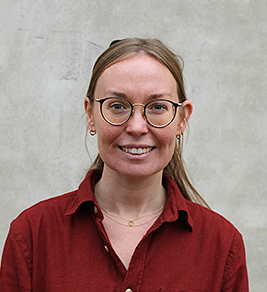Of the five Nordic islands surveyed, the most self-sufficient is Åland, and the least self-sufficient is Bornholm. The degree of self-sufficiency is important for crisis preparedness and for thriving rural areas – but what does it mean for sustainability? This issue is being investigated in a new report.
The report maps self-sufficiency in food production in five Nordic island communities, i.e. how much of the food consumed by the islands has also been produced there. At one end of the spectrum, we have Åland with a varied production of milk and cheese, potatoes and barley, fish and vegetables. At the other end is Bornholm, with little by way of high-quality vegetable production, but also large exports of pigs. Iceland falls between the two, with the second-highest degree of self-sufficiency, followed by the Faroe Islands and Greenland.
Read the report: Self-sufficiency in food production in five Nordic island communities
Locally produced = sustainable?
The basic issue examined in the report is whether greater self-sufficiency in food production also makes food systems more sustainable.
“The answer depends on what is produced and how. If local food production requires a lot of space, energy, and water, it may be more sustainable to produce it elsewhere. Local and sustainable food production can’t be seen as equal,” says Louise Ormstrup Vestergård, project manager and researcher at the Nordic research institute Nordregio.
Polarised discussion
Historically, there have been political arguments for increasing self-sufficiency, so that a country doesn’t become too dependent on others. On the other side of the coin, there are economic arguments for completely open borders. But what about sustainability?
“I don’t think that either sustainability or the robustness of food systems would benefit from switching to 100% local production. It can become both socially and environmentally unsustainable if you have too high a share of self-sufficiency, both locally and globally. Our focus has been on what can be done to increase the sustainability of local food production,” says Louise Ormstrup Vestergård.
New proteins in Bornholm
The report states that a change in production from meat to plant-based foods could increase self-sufficiency in a sustainable way, especially in Åland and Bornholm. It cites a good example of a project in Bornholm, Food Bornholm, in which 13 farmers came together to explore the possibility of growing proteins as an alternative to meat, which is being demanded by consumers and could contribute increasing the diversity of production in the island.
The biggest obstacle to self-sufficiency in food in all five islands is competition from cheap, imported food. In addition, there are difficulties in making locally produced food available to consumers.
11 proposals for increased self-sufficiency
RekoRingen in Åland is cited as a good example, in which producers have come together to meet consumers face to face. The report provides 11 recommendations, both to sustainably increase food self-sufficiency, as well as to improve the capability to calculate the degree of self-sufficiency more accurately.
“A lot of data is missing and the level of detail is insufficient. Perhaps data could be synchronised and we could work at the Nordic level to get a better picture of self-sufficiency in food production.”
Facts/estimated degree of self-sufficiency in the islands surveyed:
- Åland: 59 per cent
- Iceland: 53 per cent
- Faroe Islands: 22 per cent
- Greenland: 17 per cent
- Bornholm 6 per cent
This article is written by Anna Rosenberg at norden.org. Find the original piece here: https://www.norden.org/en/news/self-sufficiency-food-production-nordic-islands
View the webinar here: https://www.youtube.com/watch?v=Gm_qB4vPbtA


